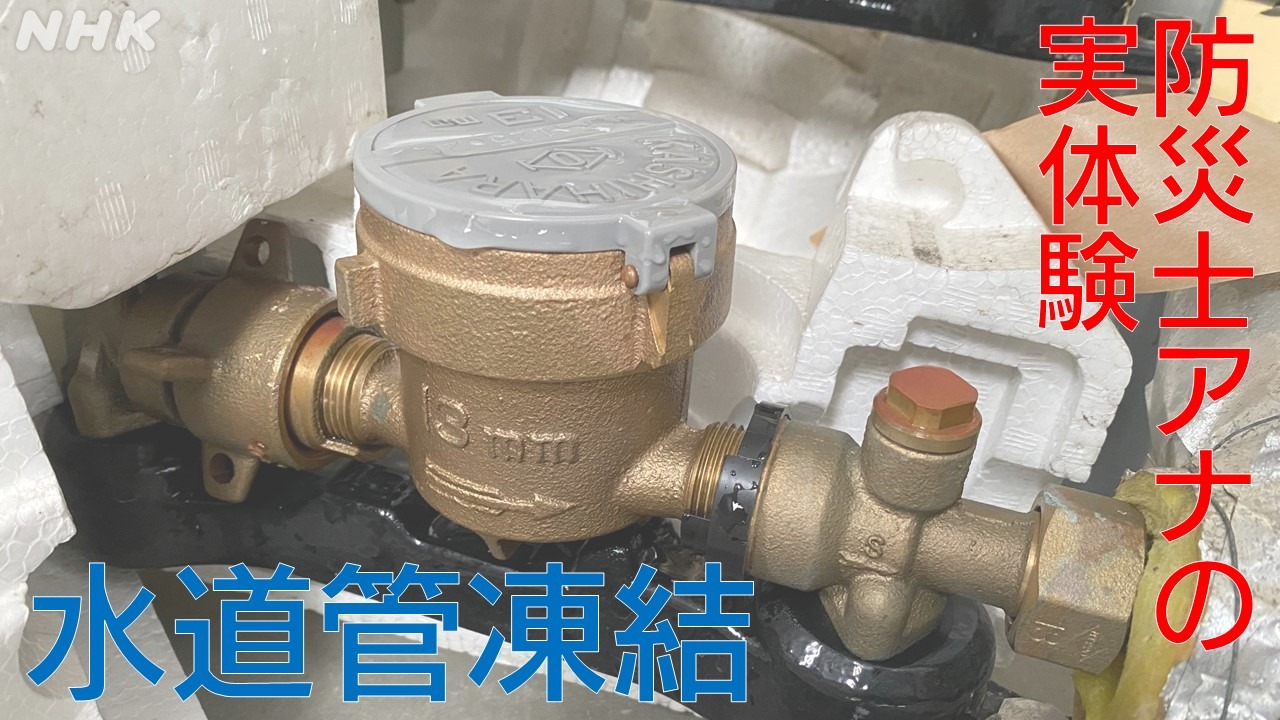避難場所と避難所の違い 正しく知って事前の対策を
- 2024年03月20日
いざという時のために今日からできるちょっとした備えをご紹介します。
今回は「避難場所と避難所の違い」です。(動画3分7秒)
This is part of a series of useful tips for when disaster strikes.
Today’s topic is “The difference between evacuation sites and evacuation shelters.”
避難場所と避難所は同じ意味だと思っていませんか?
混同してしまうと命に関わる危険もあるんです。
災害時の避難の流れで考えてみましょう。
津波の危険があるときを例に考えます。
Do you confuse the two?
Doing so could put your life at risk.
Let’s look at the right way to evacuate during a disaster.
We’ll use the threat of a tsunami as an example.
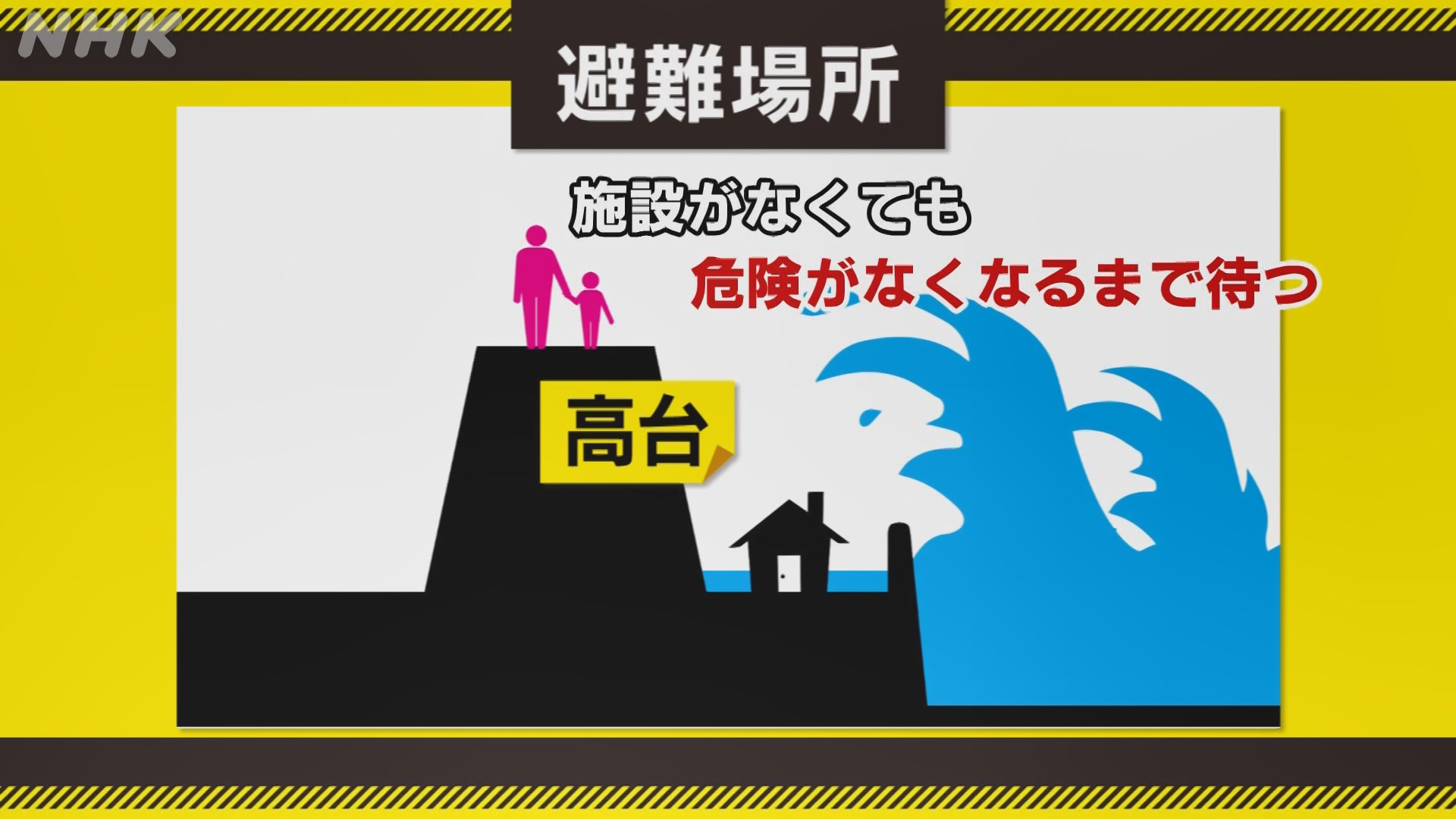
地震が起こり津波の危険があるとき、まず高台に移動します。高台に施設がないときでも高台に移動して屋外で津波の危険がなくなるまで待ちます。この場所は「避難場所」です。
When there’s the threat of a tsunami you first want to move to higher ground.
There you wait outside for the threat to pass, even if there are no structures to shelter in.
This is an “evacuation site.”
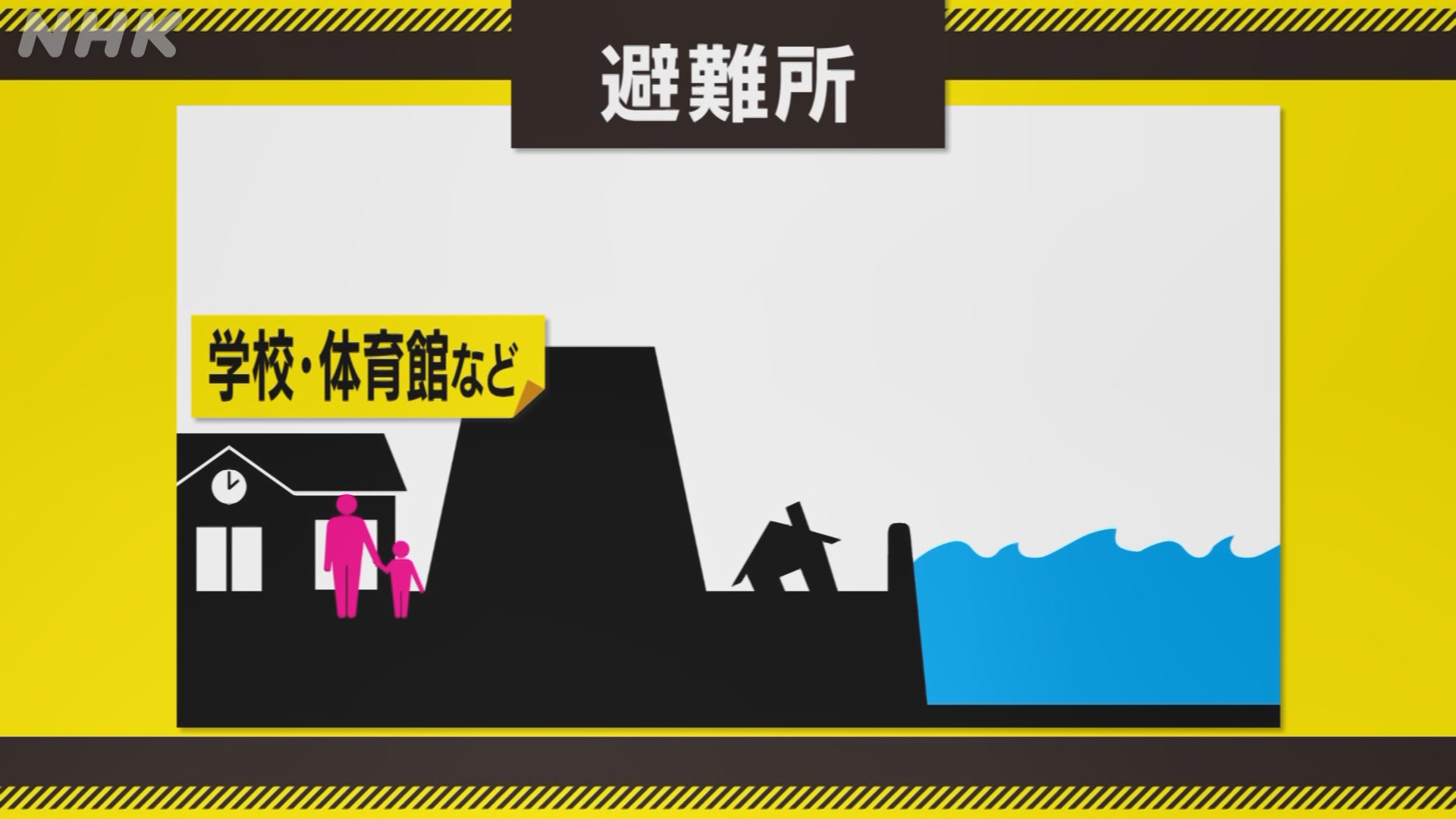
津波の危険が去りました。でも自宅は津波の被害で戻ることができません。その場合は、避難場所から移動して避難生活を送ることができる体育館や公民館に行きます。この場所を「避難所」と呼びます。
避難場所と避難所の違い、お分かりになりましたか?
The threat has passed.
However, you can’t go back home because it was damaged by the tsunami.
Then you’d leave the evacuation site and shelter at a local school gym or community center.
These are “evacuation shelters.”
Do you understand the difference now?
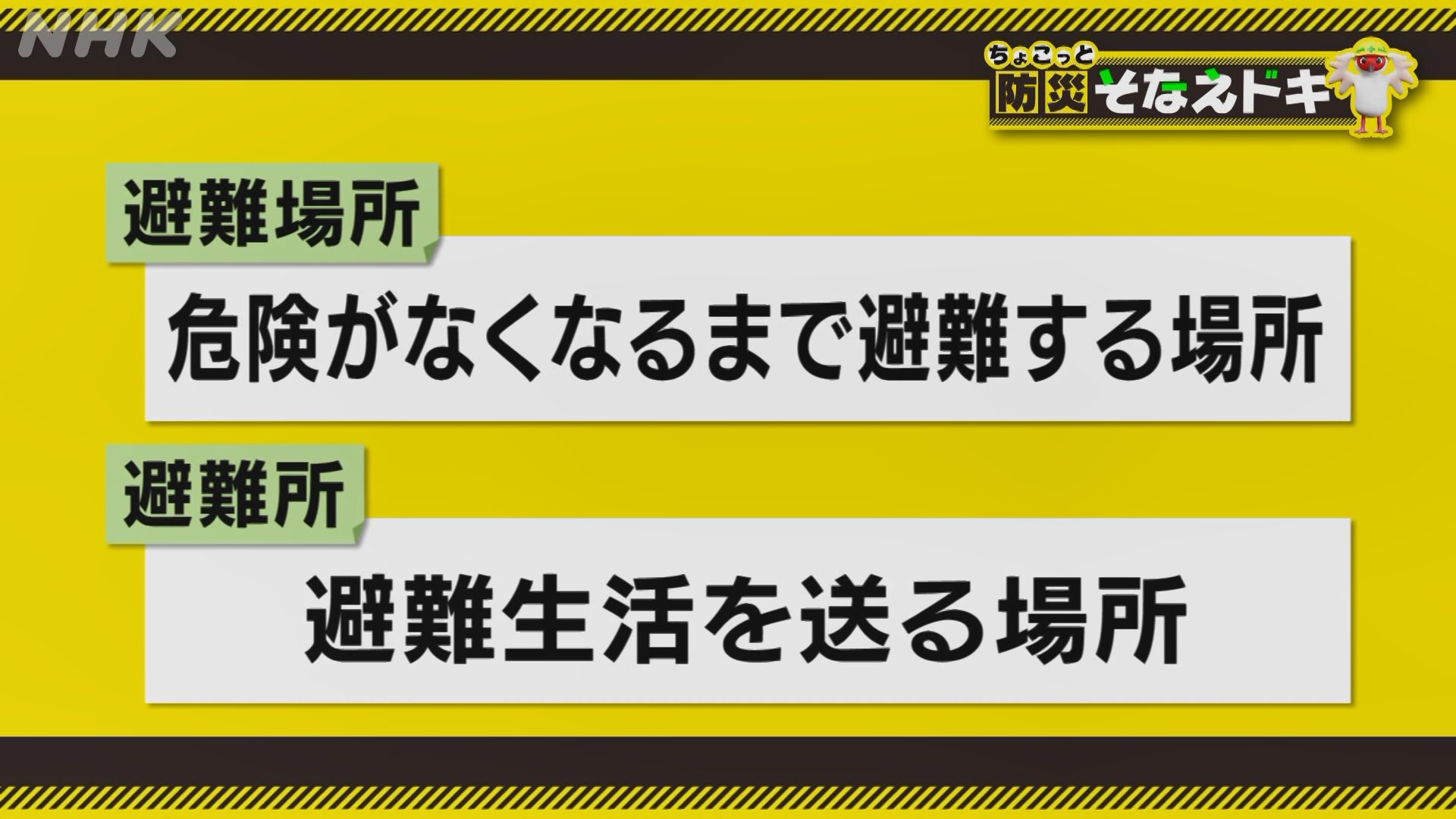
「避難場所」は危険がなくなるまで一時的に避難する場所、「避難所」は避難生活を送る場所です。言葉が似ていて勘違いしやすいですが全く意味あいが違うので注意が必要です。避難生活の場である避難所に逃げてもそこで災害に見舞われ命を守れないということもあり得るんです。
“Evacuation sites” are places to stay until a threat has passed.
“Evacuation shelters” are places to stay after a disaster when you can’t get to your home or it’s unlivable.
While easy to confuse, remember they’re two different things.
Keep in mind that the shelter might be damaged when you arrive.
Then you’ll need to go elsewhere.
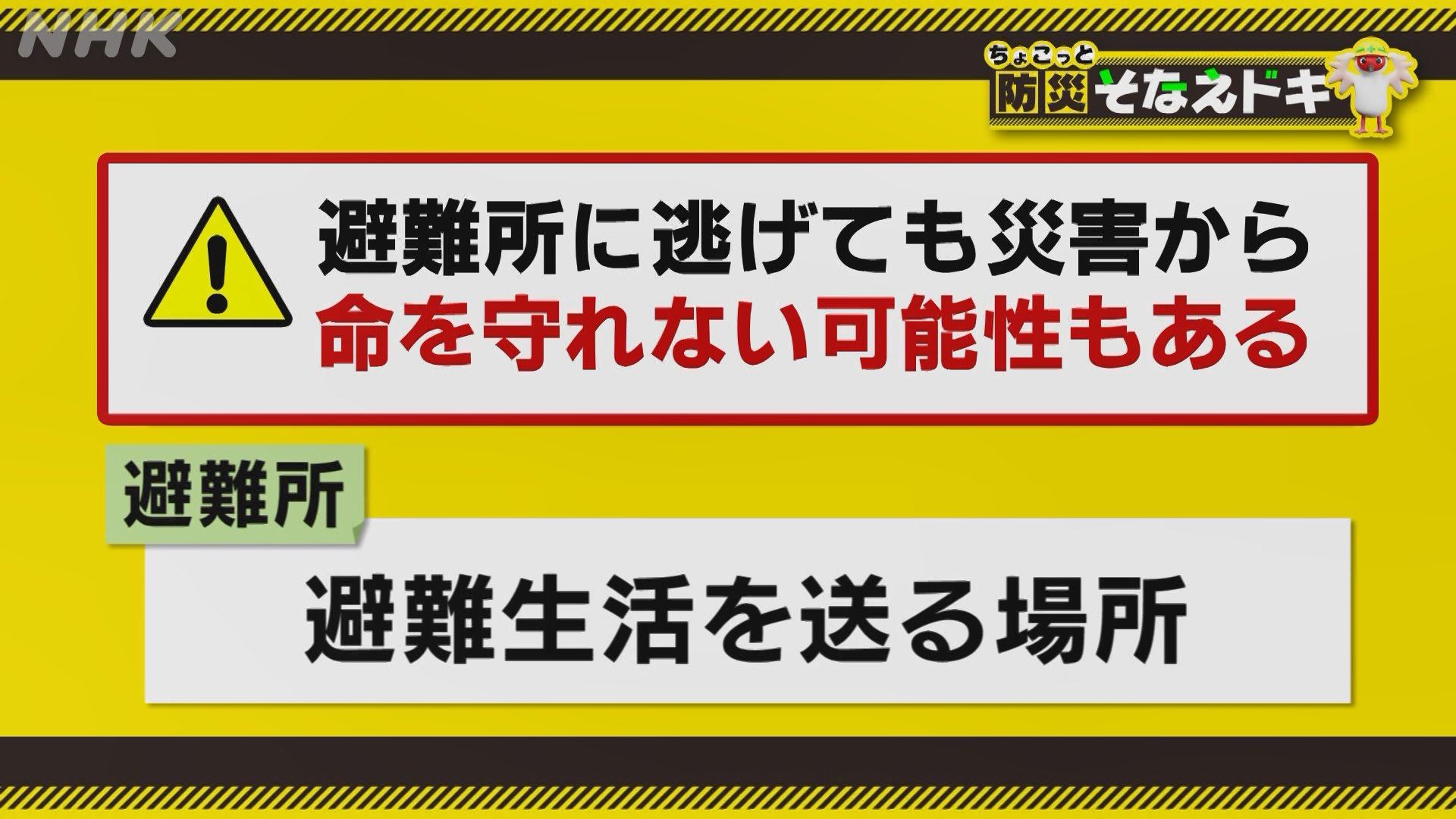
また重要なのは全ての災害で同じ避難場所が安全とは限らないという点です。
避難場所にも「向き・不向き」があるんです。
Also remember that an evacuation site may not be safe for all types of disasters.
Each is suitable for some disasters but not others.
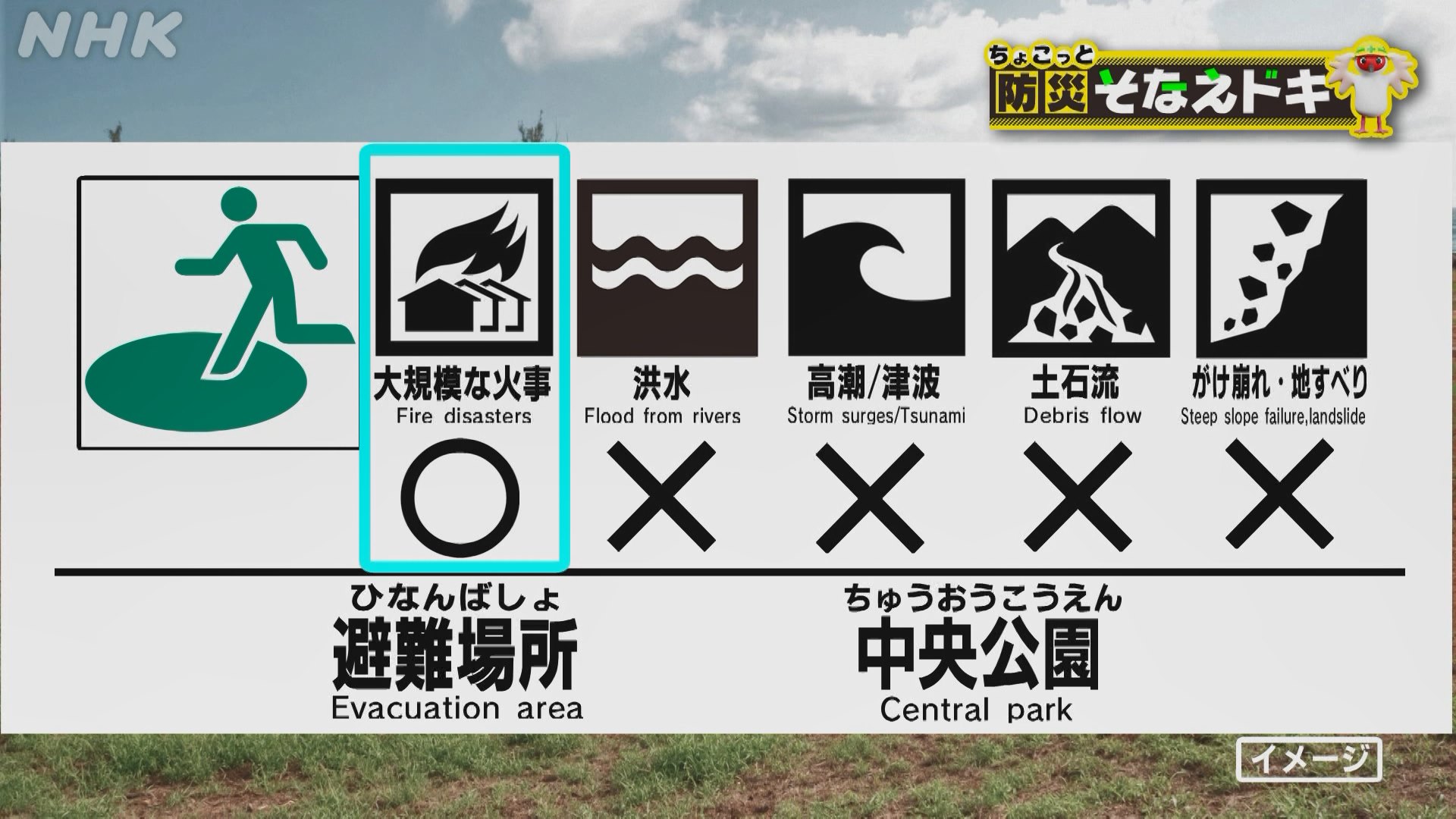
いま全国の避難場所、避難所にはどの災害で使うことのできる場所かがピクトグラムで明示されています。例えば低い土地にある公園やグラウンドなどの避難場所は、地震や大規模な火事などの災害では有効ですが津波や水害などは浸水が想定され危険です。場所によっては土石流やがけ崩れ、地すべりなどの危険もあります。
All sites and shelters have pictograms showing the disasters they can be used for.
Parks and school playgrounds in low areas are good for earthquakes and large fires but not tsunami or floods.
Some sites may also be at risk for avalanches, rockslides and landslides.
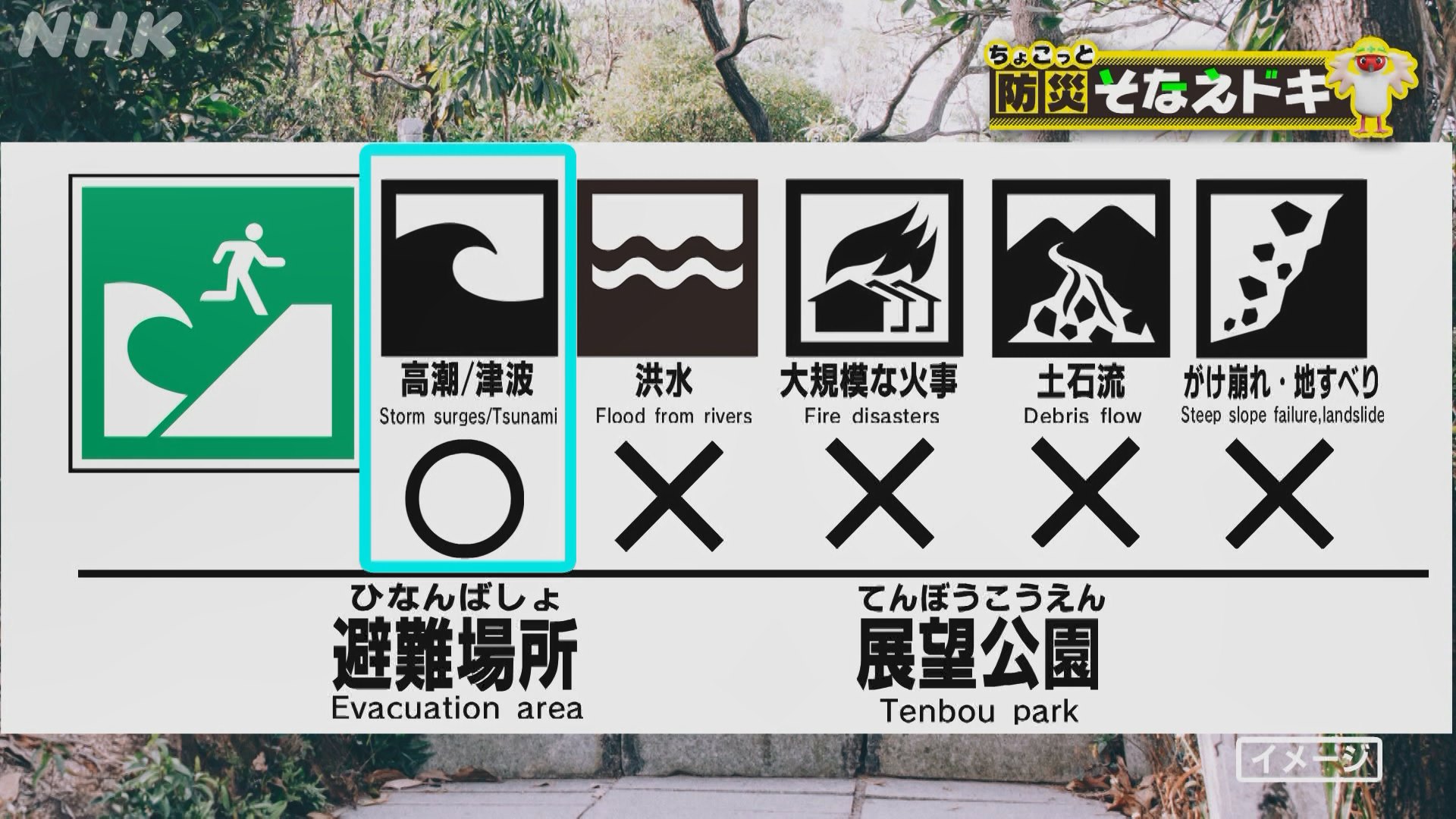
一方で、同じ公園でも高い土地であれば津波や高潮などの避難場所となっている場合もあります。津波や水害から安全を確保するためには高い土地にある避難場所しか逃げてはいけません。
自宅近くの「避難場所」「避難所」そしてそれらがどの災害に有効な場所や施設であるか、今すぐチェックしてみましょう。
Parks on high ground can be used for tsunami and storm surges.
The only place to be safe from these disasters is on high ground.
Take a moment now to find the evacuation sites and evacuation shelters near your home and when they can be used.
今日のポイント「避難場所と避難所の違いを知って正しく避難する」。
今日がそなえドキ!ちょっとした備えが命を守ります。
Today you learned to evacuate properly by knowing the difference between evacuation sites and evacuation shelters.
Start preparing today! Even the littlest thing could save your life.
Differences Between Evacuation Sites and Evacuation Shelters
This is part of a series of useful tips for when disaster strikes.
Today’s topic is “The difference between evacuation sites and evacuation shelters.”
Do you confuse the two?
Doing so could put your life at risk.
Let’s look at the right way to evacuate during a disaster.
We’ll use the threat of a tsunami as an example.
When there’s the threat of a tsunami you first want to move to higher ground.
There you wait outside for the threat to pass, even if there are no structures to shelter in.
This is an “evacuation site.”
The threat has passed.
However, you can’t go back home because it was damaged by the tsunami.
Then you’d leave the evacuation site and shelter at a local school gym or community center.
These are “evacuation shelters.”
Do you understand the difference now?
“Evacuation sites” are places to stay until a threat has passed.
“Evacuation shelters” are places to stay after a disaster when you can’t get to your home or it’s unlivable.
While easy to confuse, remember they’re two different things.
Keep in mind that the shelter might be damaged when you arrive.
Then you’ll need to go elsewhere.
Also remember that an evacuation site may not be safe for all types of disasters.
Each is suitable for some disasters but not others.
All sites and shelters have pictograms showing the disasters they can be used for.
Parks and school playgrounds in low areas are good for earthquakes and large fires but not tsunami or floods.
Some sites may also be at risk for avalanches, rockslides and landslides.
Parks on high ground can be used for tsunami and storm surges.
The only place to be safe from these disasters is on high ground.
Take a moment now to find the evacuation sites and evacuation shelters near your home and when they can be used.
Today you learned to evacuate properly by knowing the difference between evacuation sites and evacuation shelters.
Start preparing today! Even the littlest thing could save your life.
狩野アナの防災記事はこちら
-

ちょこっと防災 そなえドキ「外国人とのコミュニケーション」
-

ちょこっと防災 そなえドキ「ムダなく食料品を備蓄!」
-
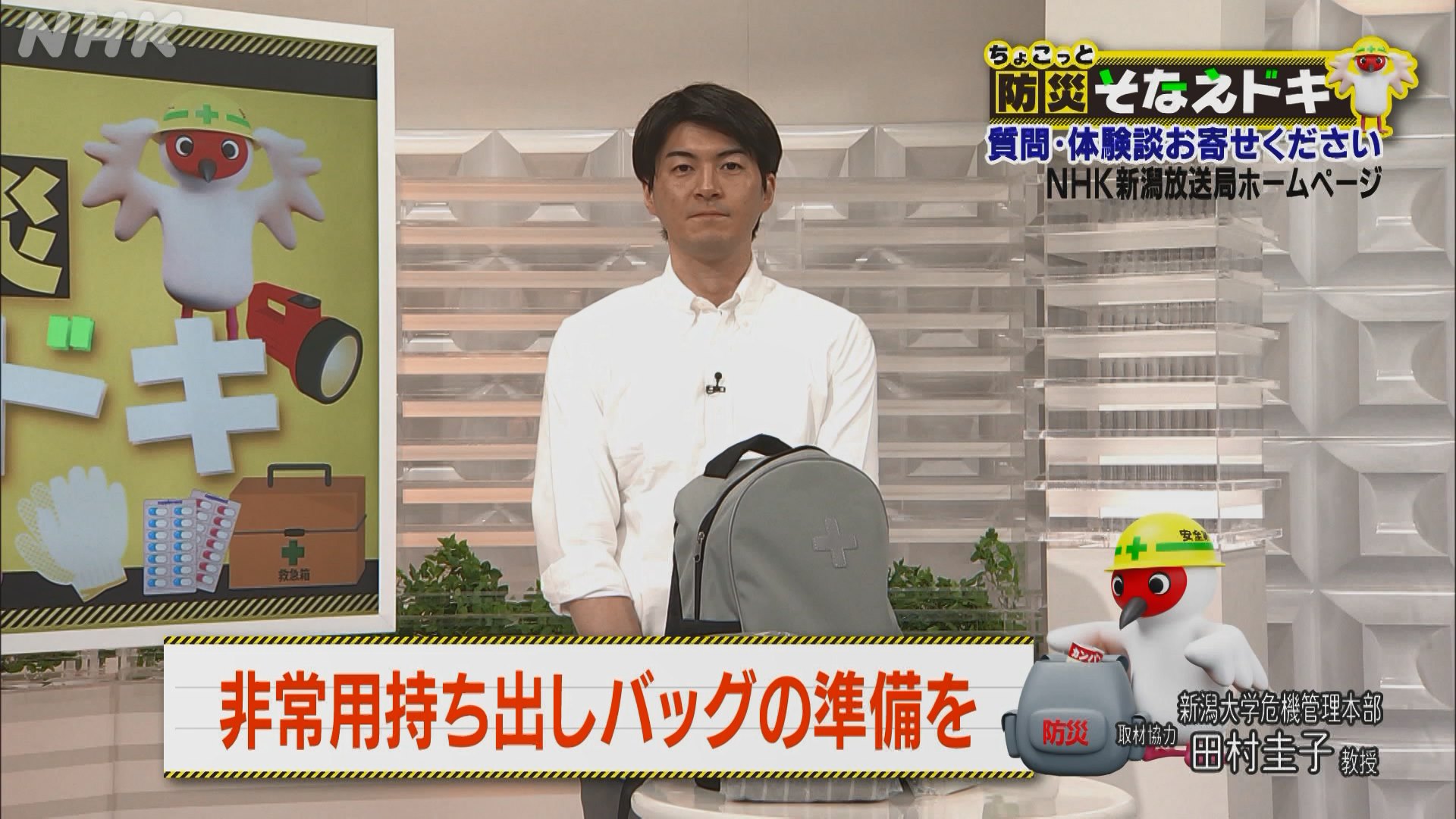
ちょこっと防災 そなえドキ「非常用持ち出しバッグの準備を」
-

ちょこっと防災 そなえドキ「キャンプ用品の活用」
-
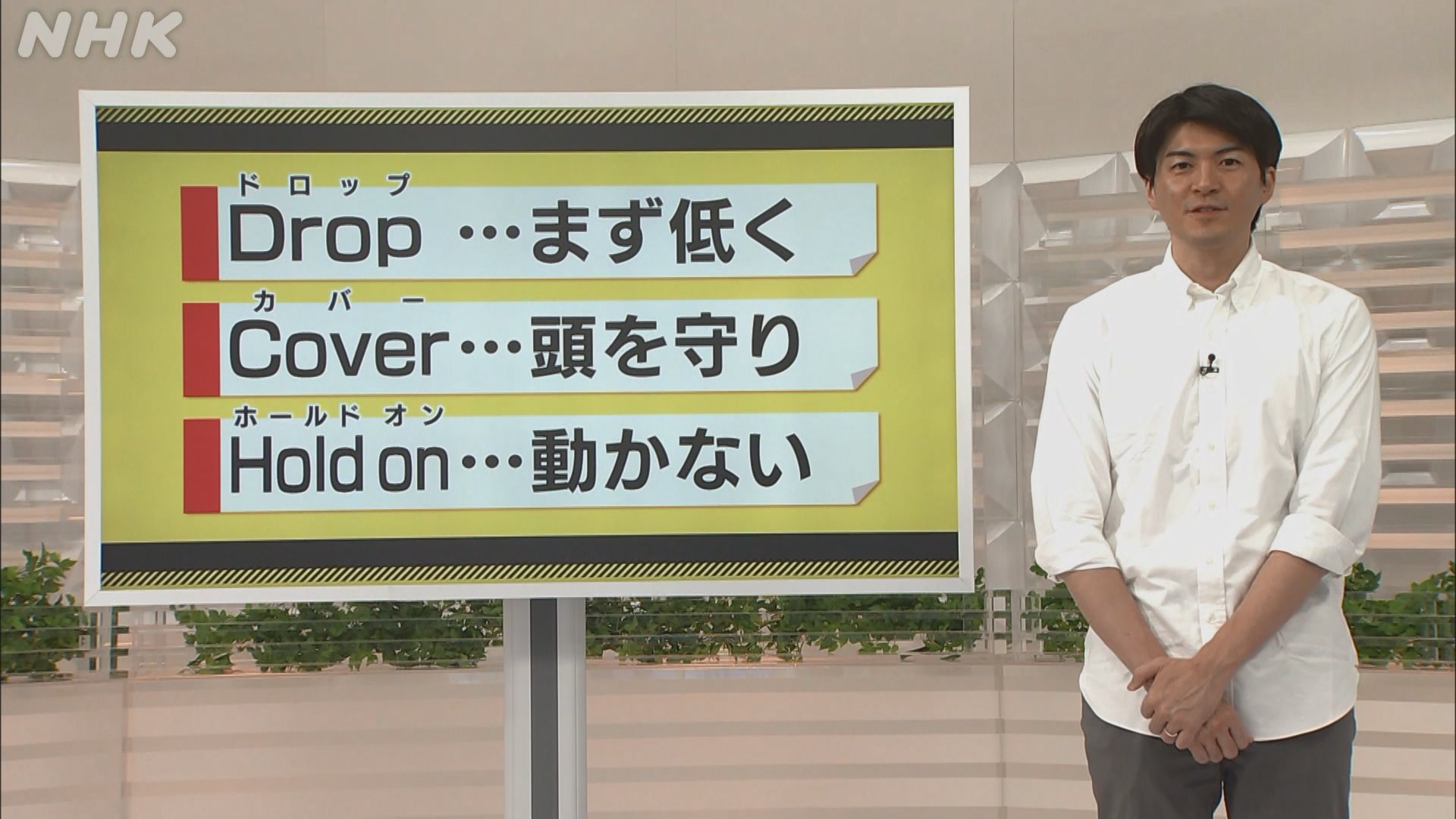
ちょこっと防災 そなえドキ「いざ地震 どうする?」
-

ちょこっと防災 そなえドキ「生きるための 水の備えを」
-

ちょこっと防災 そなえドキ「NHKニュース・防災アプリの活用法」
-

新潟県の地震・津波被害想定 人的被害・建物・ライフラインは
-

ちょこっと防災そなえドキ「災害時デマに惑わされない」
-

ちょこっと防災そなえドキ「停電時の明かり」
-

ちょこっと防災そなえドキ「高速道路で地震にあったら」
-
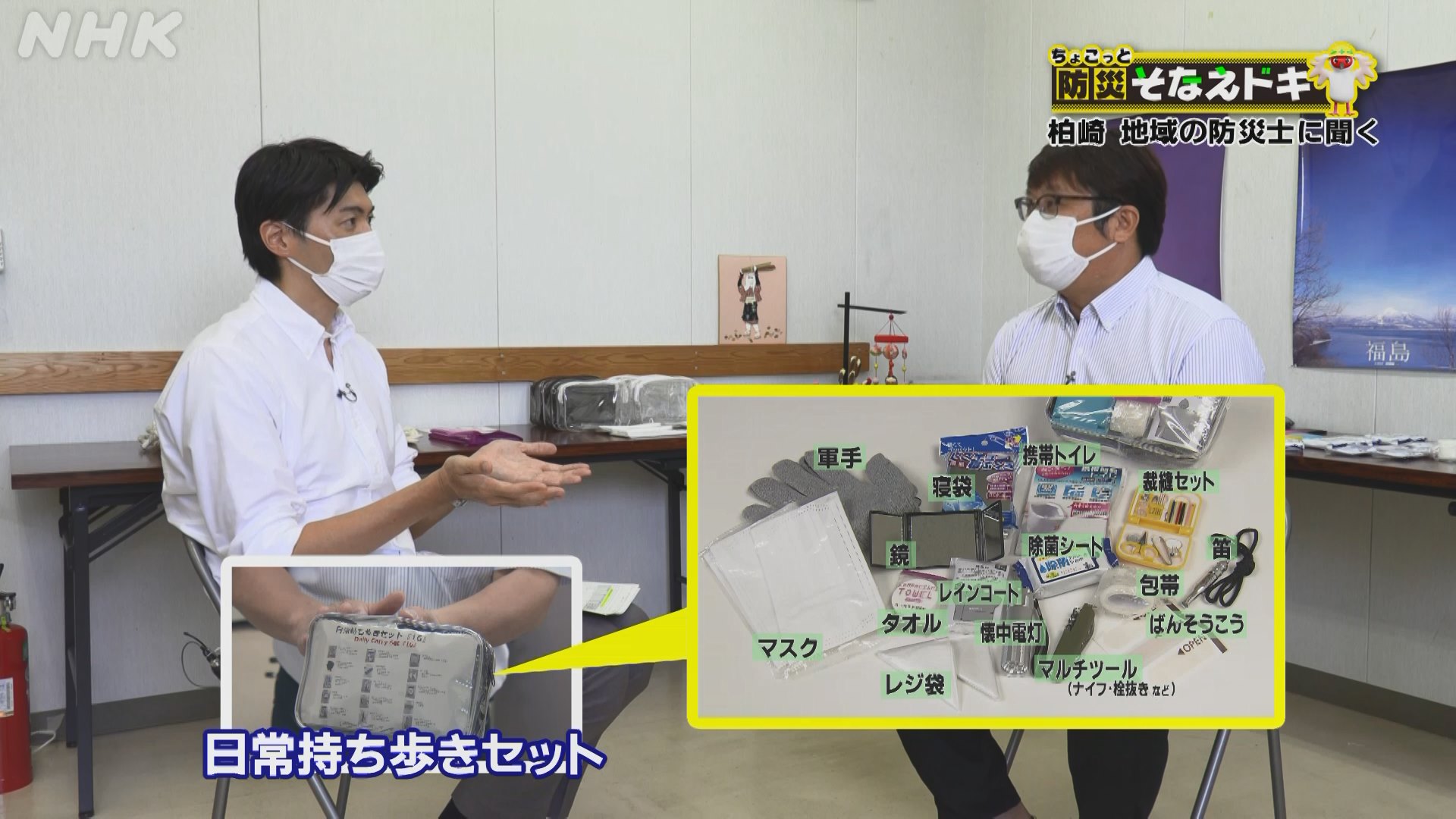
ちょこっと防災 そなえドキ「防災士に聞く 日常の備え」
-
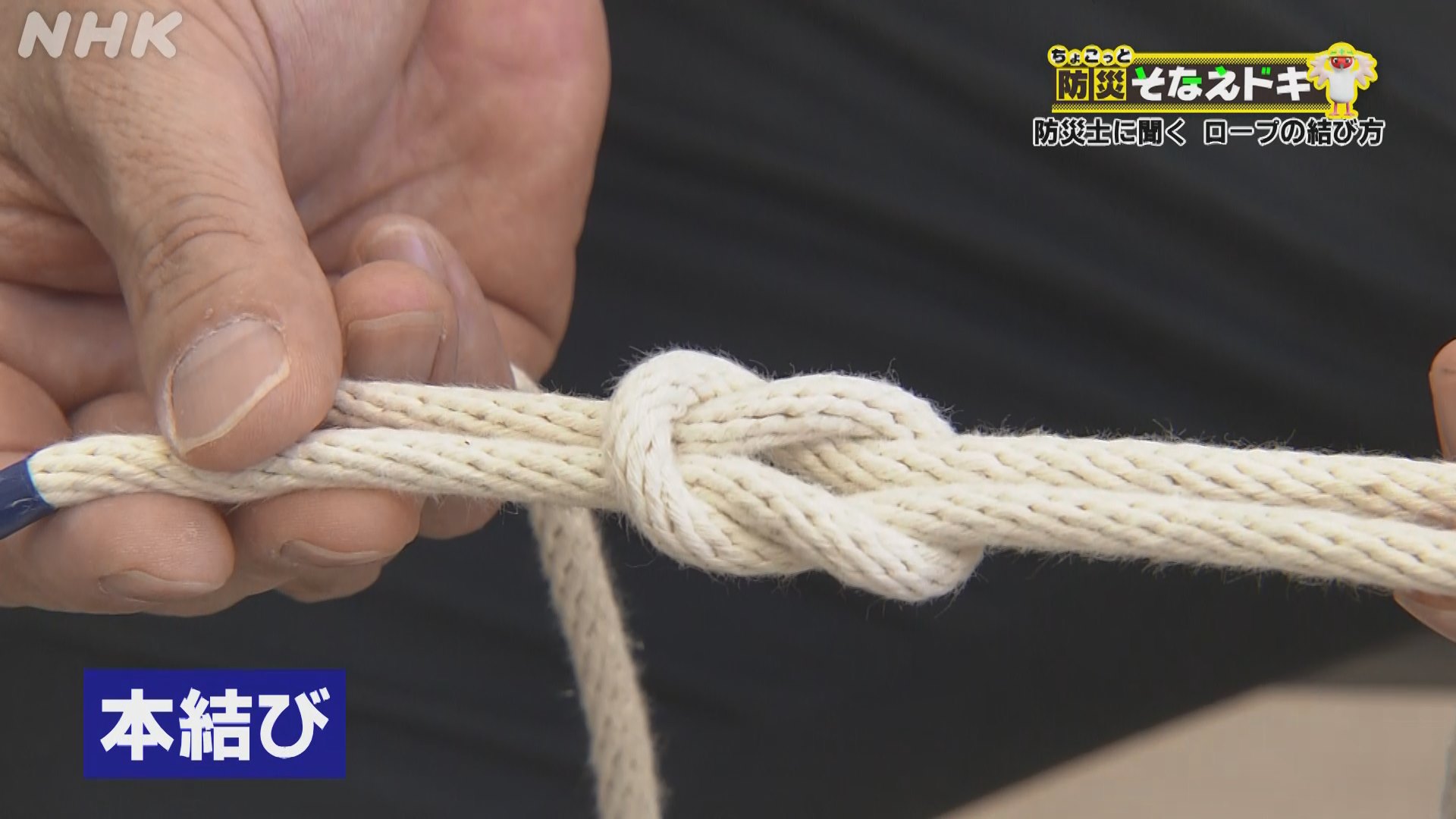
ちょこっと防災 そなえドキ「防災士に聞く ロープの結び方」
-
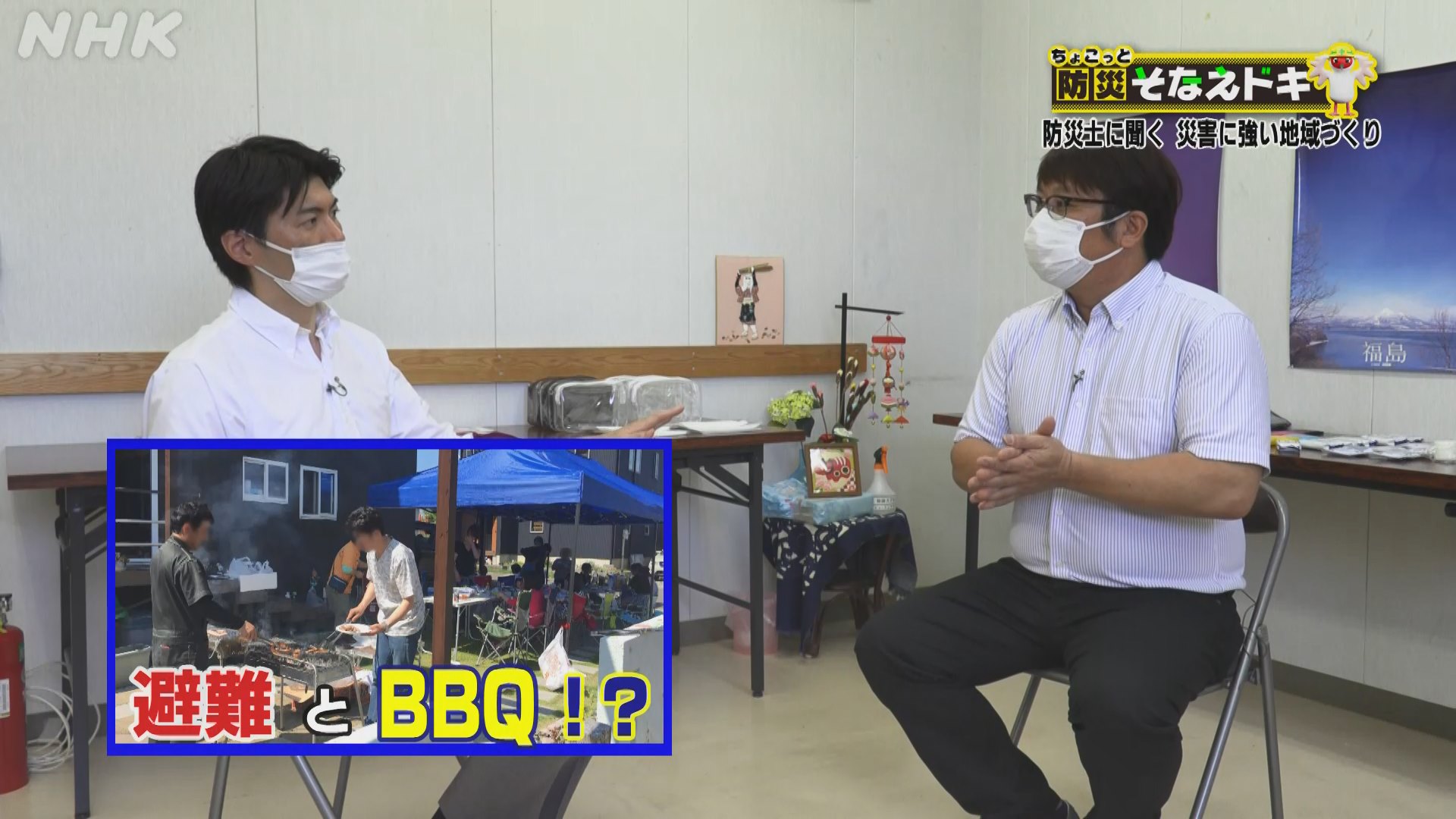
ちょこっと防災 そなえドキ「防災士に聞く 災害に強い地域」
-

ちょこっと防災そなえドキ「土砂災害危険度マップの活用法」
-

ちょこっと防災そなえドキ「NHKニュース・防災 マップ活用法」
-

ちょこっと防災 そなえドキ「水害 どう備える?」
-

ちょこっと防災 そなえドキ「実践!ローリングストック」
-
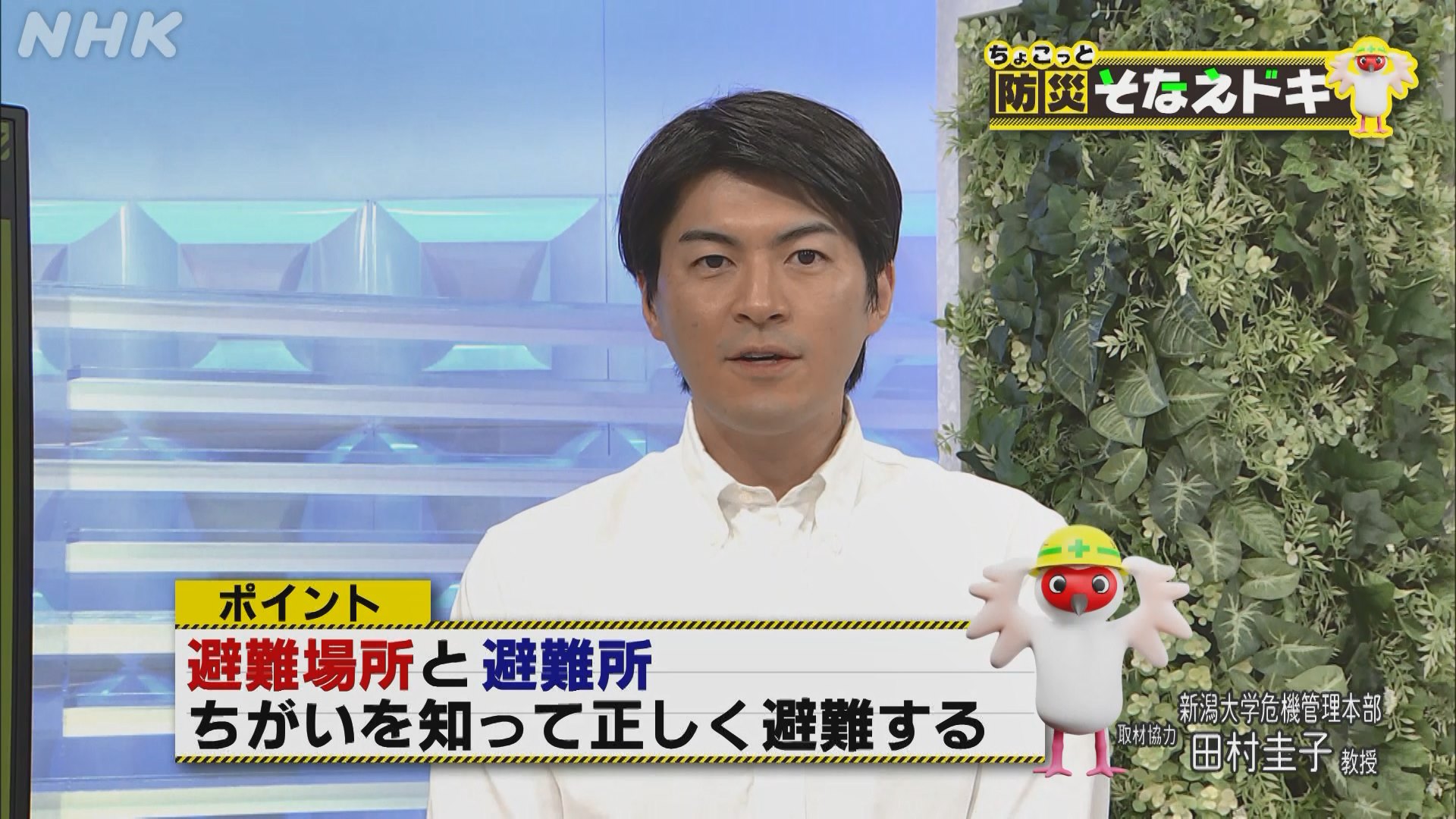
ちょこっと防災 そなえドキ「避難場所と避難所のちがい」
-
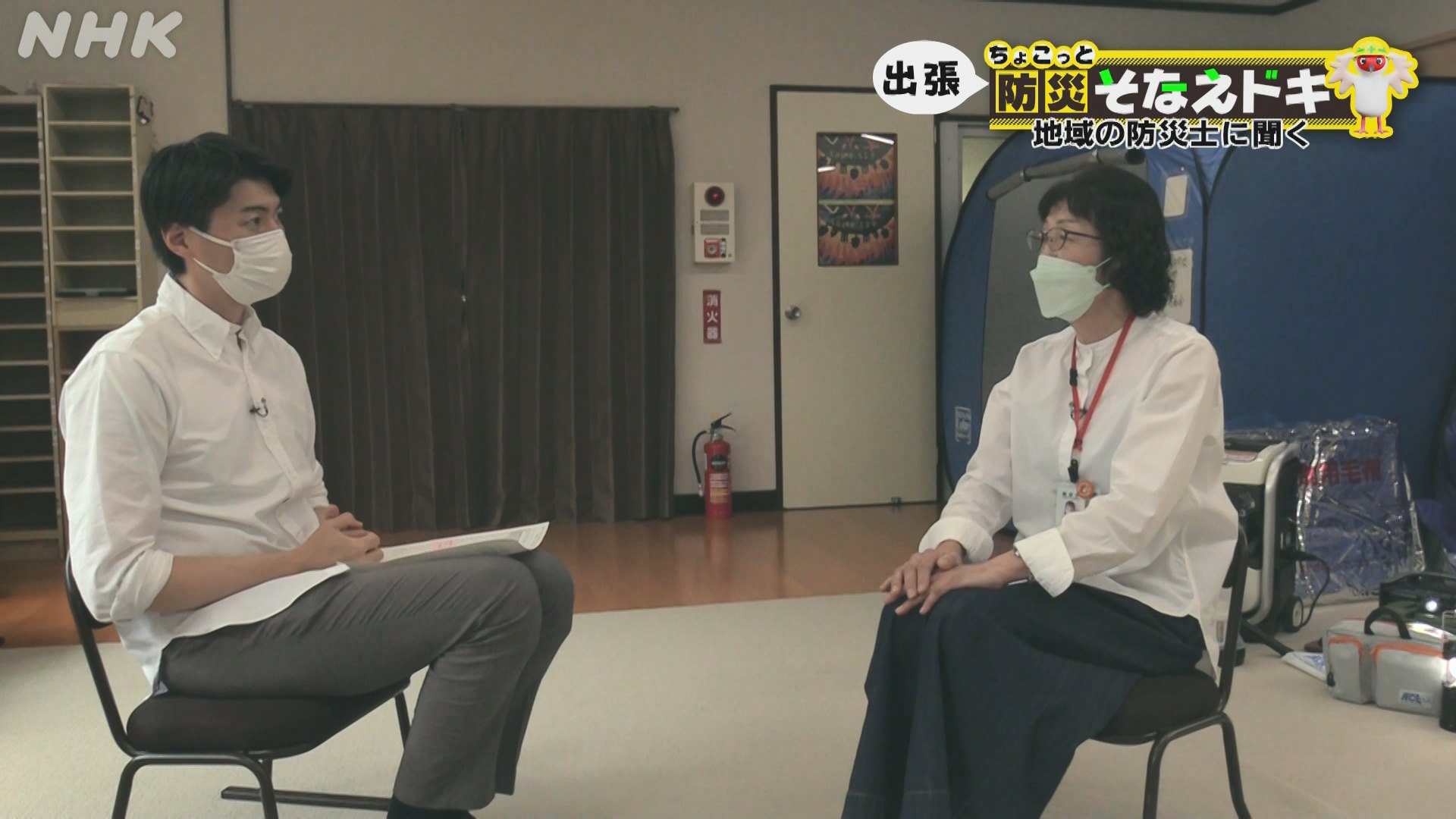
ちょこっと防災 そなえドキ「地域の防災士に聞く」
-

ちょこっと防災 そなえドキ「外国人とのコミュニケーション」
-

ちょこっと防災 そなえドキ「ムダなく食料品を備蓄!」
-

ちょこっと防災 そなえドキ「非常用持ち出しバッグの準備を」
-

ちょこっと防災そなえドキ「いざ地震 どうする?」
-

ちょこっと防災 そなえドキ「生きるための 水の備えを」
-

ちょこっと防災 そなえドキ「NHKニュース・防災アプリの活用法」

